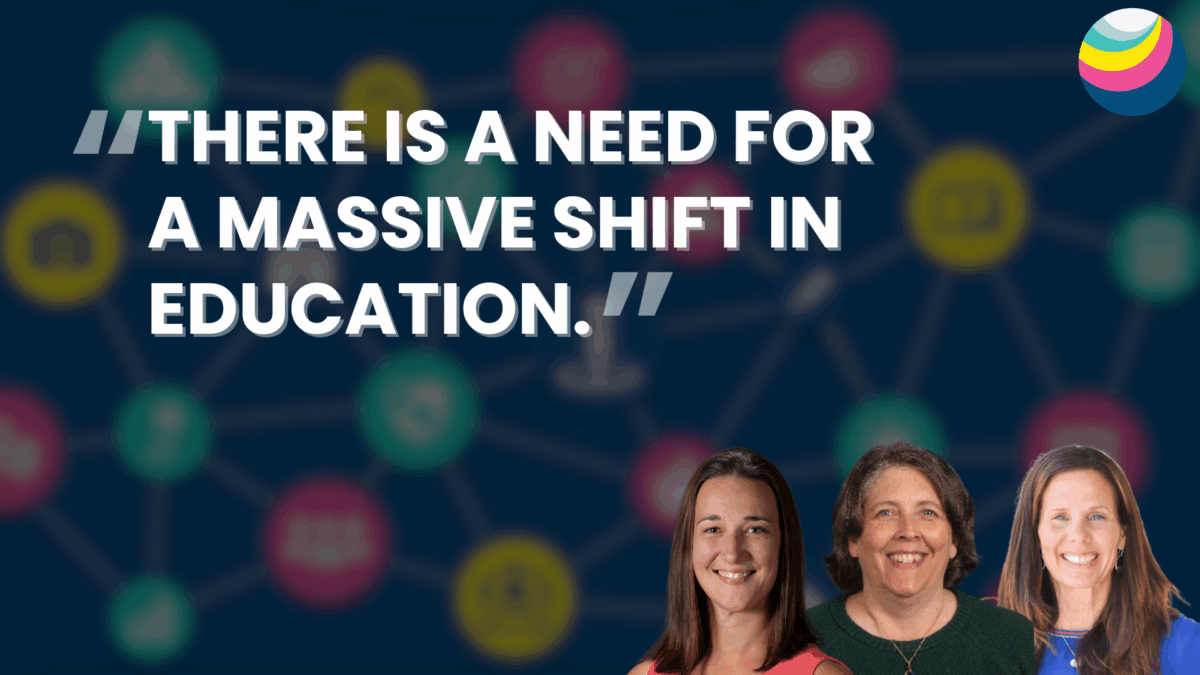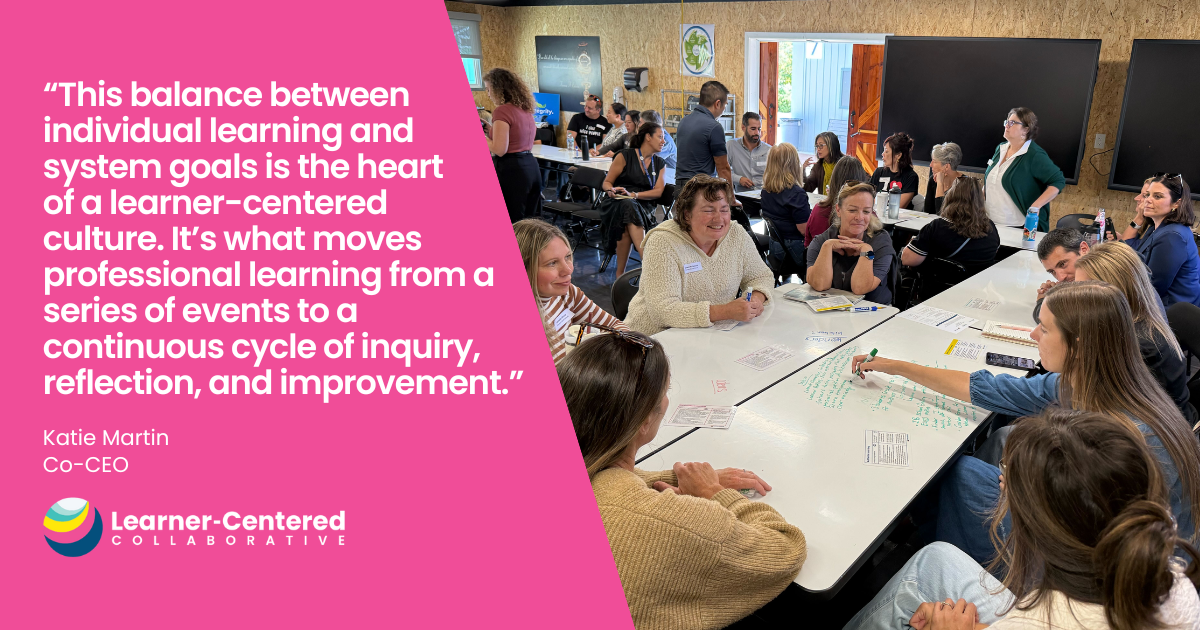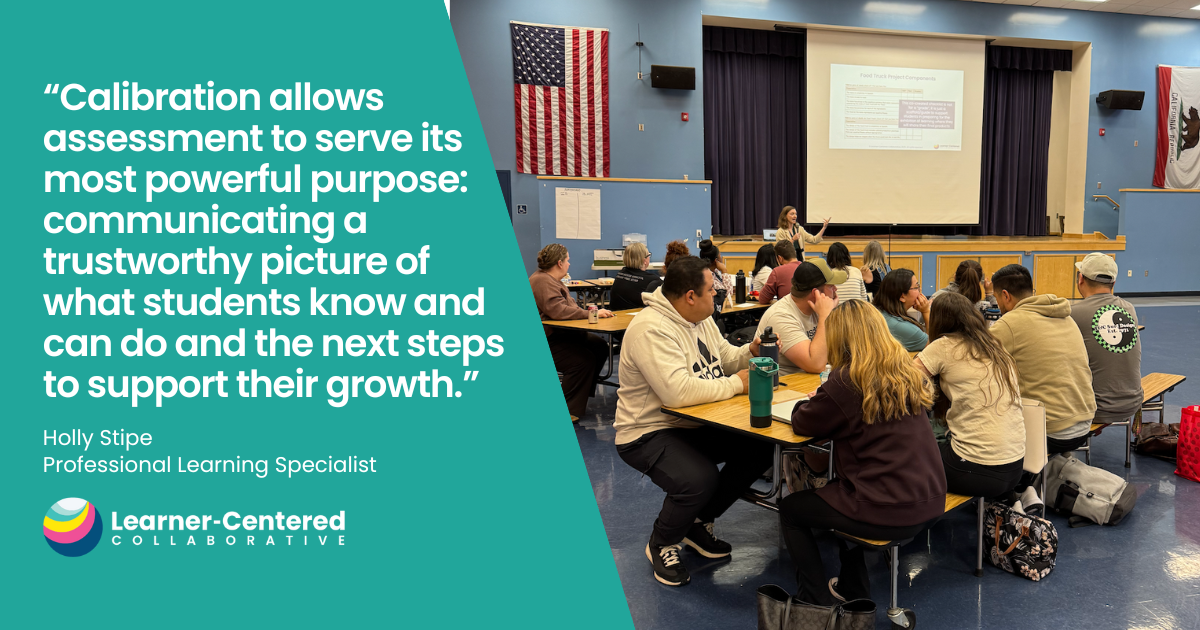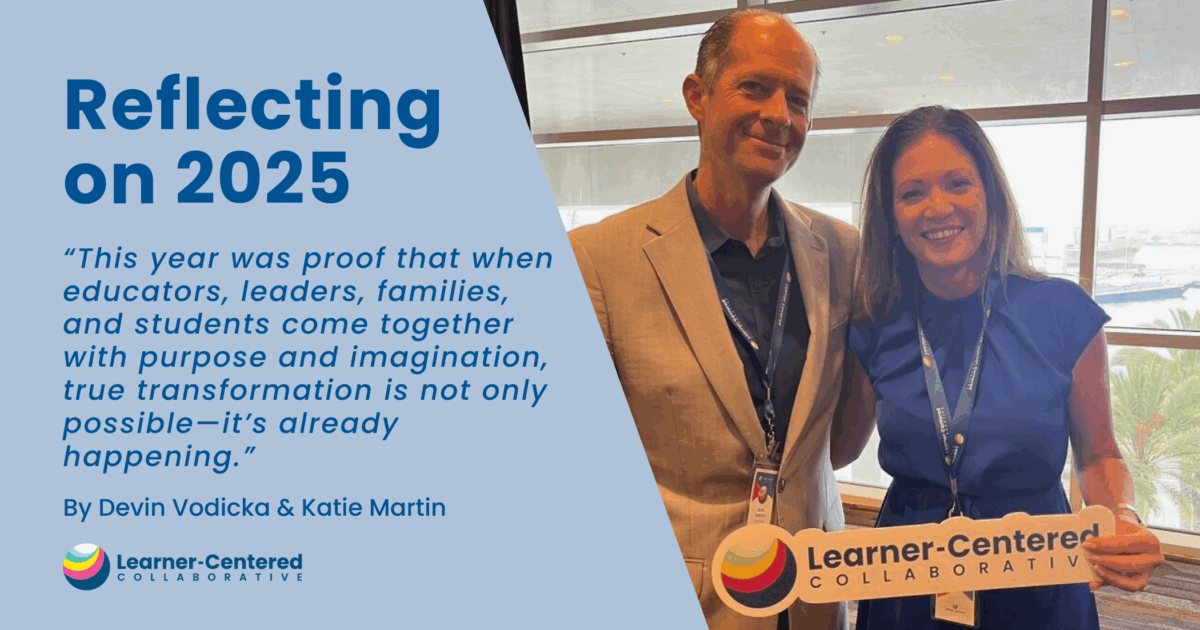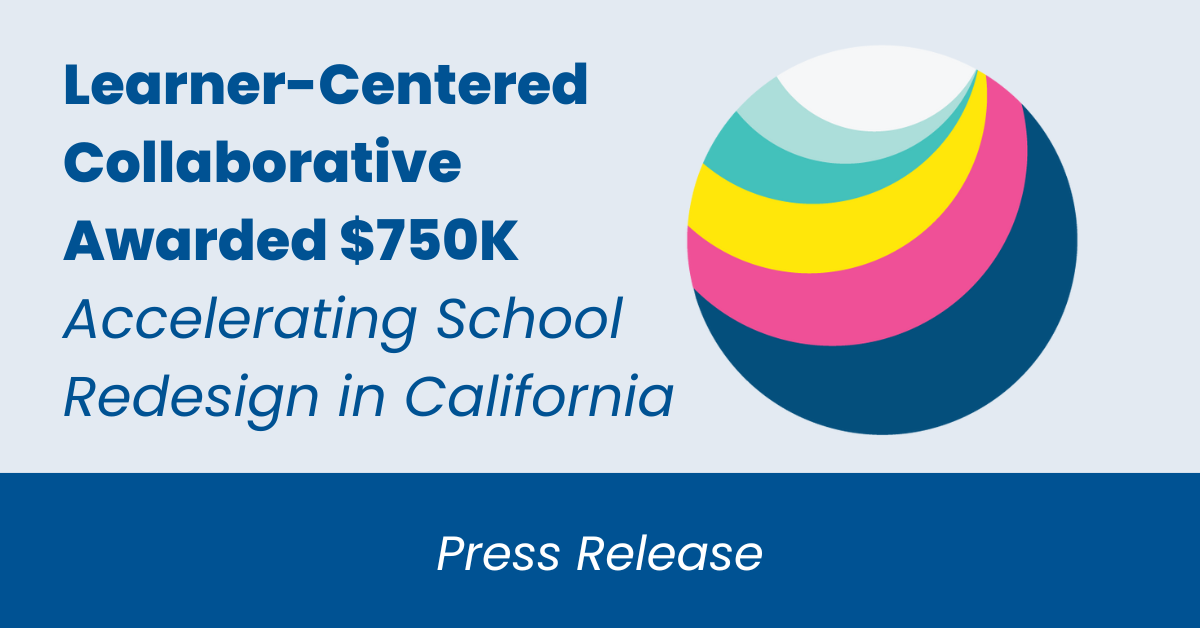Debunking the Math Myth: How Learner-Centered Classrooms Deepen Understanding
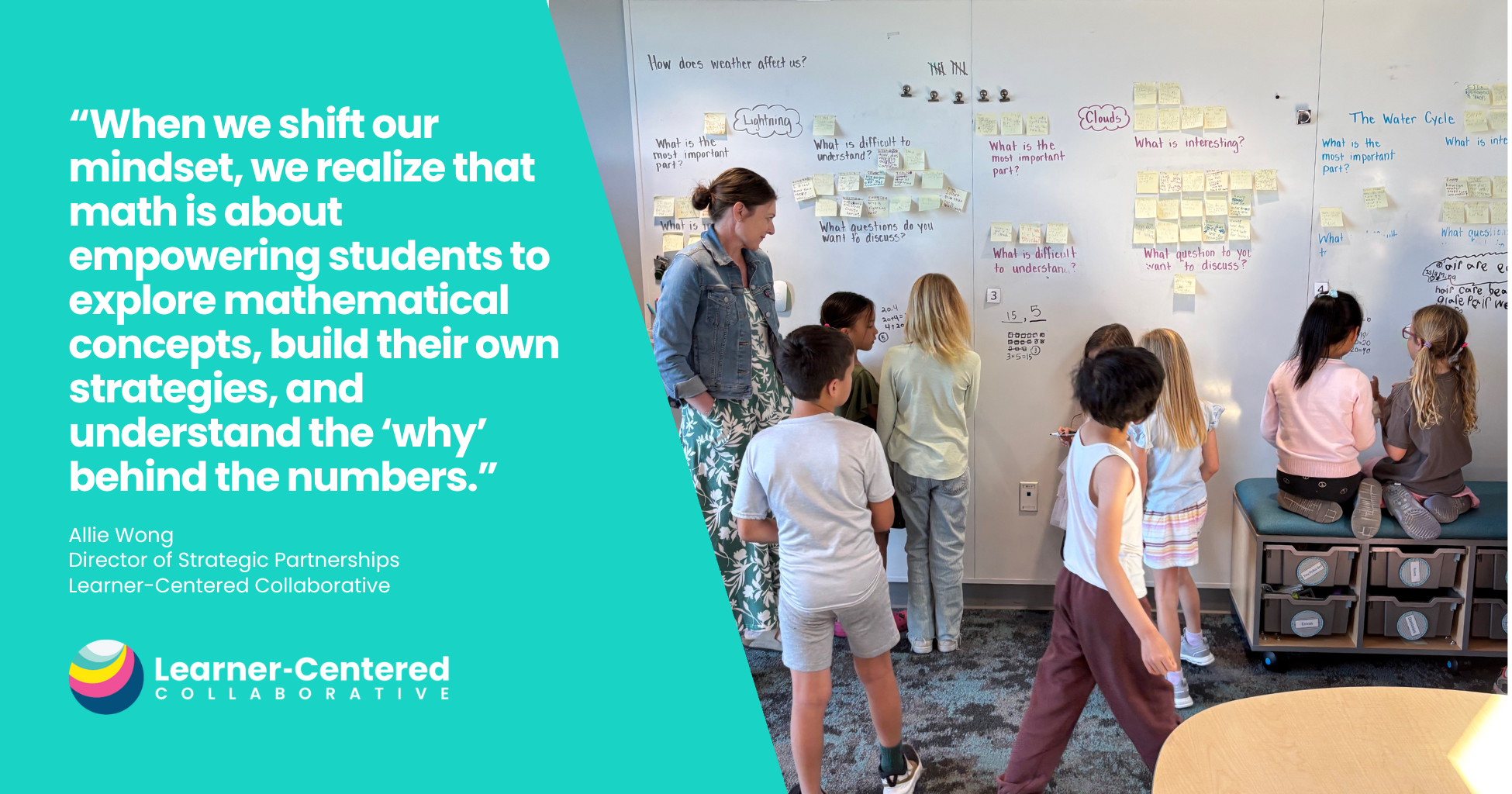
In a learner-centered classroom, math is about more than numbers and formulas—it’s about curiosity, exploration, and making sense of the world.
Picture this:
It’s 10:00am in Ms. Kim’s 3rd grade classroom and students are gathered on the rug around a chart. Two students have just finished sharing their strategies with the whole class on the story problem:
“Ernie and Bert went out to dinner. Ernie ordered a pizza and Bert ordered a salad. Ernie ate 2/6 of his pizza and Bert ate ⅓ of his salad. Who ate more?”
Ms. Kim: Let’s try to make sense of this.
Calvin: I agree with Samantha’s strategy because you do not know the size of either of them. The pizza could be the size of the world and the salad could be the size of an ant. You would never know.
Kyle: Wow, that’s a big pizza.
Anabel: I kind of disagree and agree with Marissa’s strategy because she didn’t say if it’s smaller or bigger. It could be the same size.
Trevor: I also agree with Marissa because if you don’t know the size, then it could be different, but it could be the same too.
Ms. Kim: Was the size mentioned in this problem?
Students: No.
Charlie: I agree with Samantha because the size of it was not said. It only said how much they ate of their dinner.
Shifting from Direct Instruction to Student Agency
In the past, Ms. Kim described her math instruction as “reactive and focused on direct instruction” rather than centering student agency. Her typical lessons in math started with a lecture, practice problems done as a class, followed by worksheets filled with numerous problems, reinforcing the belief that math is about memorization and speed rather than deep understanding.
Like many educators, she once subscribed to the belief that this was the only way to teach math, and that a more learner-centered approach would lead to confusion, inefficiency, and lack of real learning.
However, after joining a Mathematical Improvement Group, Ms. Kim transformed her approach, shifting towards constructivist teaching where students are the leaders of their learning. She realized that when students take ownership of their learning, they actually develop a stronger, more conceptual understanding of math.
Her role as the teacher is that of a facilitator, guiding students as they uncover mathematical concepts together. She shifted the mathematical authority in the classroom from the teacher to the students, while still holding them accountable for learning specific mathematical concepts.
Through careful planning of problem type, structuring of discussions and anticipating student thinking, the learners themselves uncover mathematical ideas by discussing a variety of solution strategies. Now, instead of one correct way to solve a problem, multiple pathways emerge: one student might draw pictures, another might use manipulatives, while yet another invents an algorithm.

Through strategic teacher facilitation, students are guided towards standards-aligned methods, while maintaining ownership of their learning.
Empowering Teachers to Facilitate Learning
Professional learning communities were key to this transformation. The first meeting of the Improvement Group began by asking teachers to examine their own experiences in math, recognizing how fear of mistakes and emphasis on right answers can limit learning. From there, we provided constructivist and learner-centered learning experiences for teachers so that they could experience productive struggle and discourse firsthand.
Each following month, teachers met in grade-level teams to:
- Collaborate on planning rich math tasks and anticipate student responses
- Plan questions that guide learners to deeper understanding
- Implement and refine strategies that elevate student discourse.
By engaging in this cycle of inquiry, teachers reported increased confidence in facilitating learner-led math discussions. One teacher shared how she planned a lesson on multiplication and division:
“When it came time to actually teach the lesson, I knew exactly what I was looking for. I knew the exact order I would share strategies so that kids would begin to see connections, and I knew the questions I would ask so that students would end up where they were supposed to be. The best moment was at the end of the discussion, one of my students raised his hand and perfectly explained the relationship between multiplication and division without me having to tell him. I felt so proud.”
Scaling Learner-Centered Math Practices
As the Improvement Group deepened their practice, their impact spread across schools. More teachers became facilitators of rich mathematical discourse, and student engagement soared.
As a group, we created a shared vision of what math would look like in our classrooms across our schools:
Math is a collaborative journey where learners actively explore and make sense of concepts. Through inquiry and problem-solving, they develop deep conceptual understanding, communicate their thinking, and build confidence as they apply math to the world around them.
The effects of this mindset and instructional shifts have been extremely impactful. Teachers in the improvement group reported a dramatic increase in confidence levels in teaching math and feeling more equipped to facilitate meaningful mathematical discussions.
Meanwhile, students who previously struggled in math demonstrated rapid improvement. This was evidenced by teacher observations and teacher-created methods of assessment, as well as an increase in math scores on standardized tests by 13 percent for all students, and 17 percent for students who qualify for free or reduced lunch after just one year.
Success goes well beyond numbers, as exhibited by teacher and student reflections.
“My students are really excited about doing math every day and are excited to be challenged. I’ve had kids who have gone from having almost zero access to a given problem, who never raised their hands during math, to sharing their strategy in front of the class and having it videotaped. The beauty of this work is that we’re not pushing kids to solve problems in a specific way; we’re allowing them to make meaning of it through whatever channels necessary and giving them the tools they need to feel successful. Students can take authentic ownership of their own learning.”
– Ms. Kim, 3rd Grade Teacher
Plus, her students agree:
“I’ve learned a lot this year in math. I didn’t know multiplication before I got to third grade. Doing work that I’ve never done before and practicing helped me learn this year. I like how we do discussions to figure it out. I never shut down because I just keep on trying. I like how math is hard.”
– Student, Ms. Kim’s Class
Math Myth Debunked
There’s a common myth that learner-centered practices don’t fit in math classrooms—that math is about speed, memorization, and getting the “right answer” at all costs. When we shift our mindset, we realize that math is about empowering students to explore mathematical concepts, build their own strategies, and understand the “why” behind the numbers.
In fact, shifting to a learner-centered approach enhances math learning by prioritizing conceptual understanding over procedural speed. Math learning is personalized because students use their own unique solution strategies that make sense to them, they don’t have to follow a prescribed formula.
Math is authentic because the problems have a real world context. A competency-based approach ensures that students are building true mathematical understanding—not just moving through content based on pacing guides, but mastering key concepts before moving forward.
A truly learner-centered math classroom creates space for every learner to participate, recognizing that all students bring valuable perspectives to mathematical conversations.
By embracing these practices, we not only break the myth that math can’t be learner-centered, but we also create classrooms where all students, regardless of their background or ability, can grow as capable, confident mathematicians. The beauty of math, like any subject, lies in the questions we ask, the ideas we challenge, and the connections we make.
Ready to bring this vision to life in your own classroom? Start small– try a rich math task, invite student strategies into the spotlight, and listen closely to how your learners make meaning. For more ideas, check out our learner-centered strategies and courses. What steps can you take to cultivate learner-centered math practices in your classroom?
